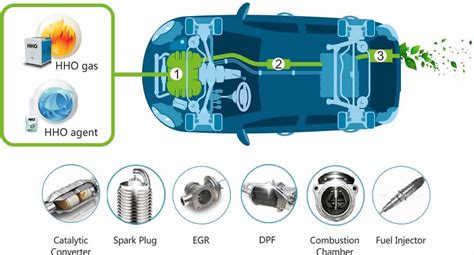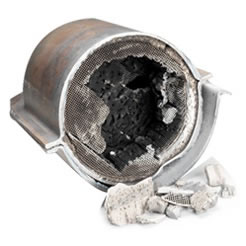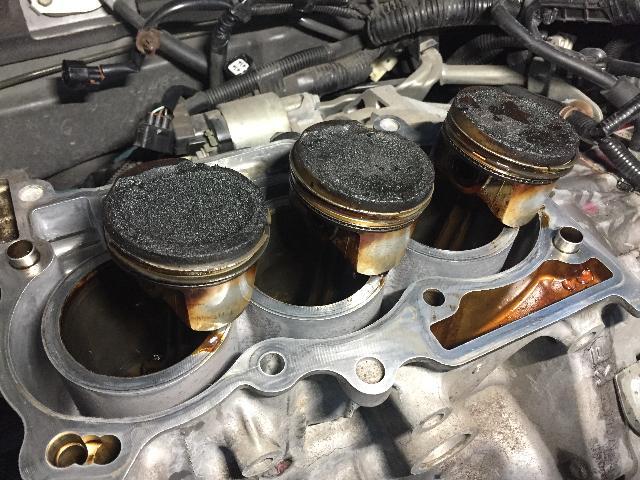WHAT IS CARBON CLEANING
The HHO cleaning process, also known as carbon cleaning, involves the use of hydrogen and oxygen gases produced by an HHO generator. These gases are introduced into the engine’s intake system while the engine is running. As the gases flow through the engine, they help to break down carbon deposits and buildup that can accumulate over time. This process helps to improve engine performance, fuel efficiency, and reduce harmful emissions.
what are the benefits of carbon cleaning?
HHO services offer an innovative and eco-friendly solution to enhance the performance of combustion engines while reducing harmful emissions. By utilizing hydrogen and oxygen gases produced on-demand from water, HHO technology helps clean carbon deposits, leading to improved fuel efficiency and engine power. This sustainable approach not only benefits the environment by lowering emissions but also extends the lifespan of engine components, offering a cost-effective and efficient solution for vehicle owners.
Land transportation in Thailand contributes significantly to greenhouse gas (GHG) emissions, primarily through the combustion of fossil fuels in vehicles. The country’s transportation sector is heavily reliant on gasoline and diesel, which emit carbon dioxide (CO2), methane (CH4), and nitrous oxide (N2O), among other pollutants. These emissions contribute to global warming and climate change, as well as local air pollution.
According to the Thailand Greenhouse Gas Management Organization (TGO), the transportation sector accounted for about 22% of the country’s total GHG emissions in 2019. This includes emissions from cars, trucks, motorcycles, and other vehicles. The main sources of GHG emissions from transportation in Thailand are:
Passenger Cars
Passenger cars are a major contributor to GHG emissions, especially in urban areas with high traffic congestion. The TGO reports that passenger cars accounted for about 43% of total transportation emissions in 2019.
Motorcycles
Motorcycles are a popular mode of transportation in Thailand, particularly in rural areas. However, they are also a significant source of GHG emissions, accounting for about 20% of total transportation emissions in 2019.
Trucks and Buses
Trucks and buses are essential for transporting goods and people across the country. However, they also contribute to GHG emissions, accounting for about 23% of total transportation emissions in 2019.
Other Vehicles
Other sources of transportation emissions in Thailand include trains, boats, and airplanes, though these account for a smaller share of total emissions compared to cars, motorcycles, trucks, and buses.
To address these emissions, Thailand has implemented various measures to promote cleaner and more efficient transportation, including:
- Promoting Public Transport
- Encouraging the use of public transportation, such as buses and trains, to reduce the number of private vehicles on the road.
- Improving Fuel Efficiency
- Implementing fuel efficiency standards for vehicles and promoting the use of cleaner fuels, such as compressed natural gas (CNG) and liquefied petroleum gas (LPG).
- Vehicle Emissions Testing
- Implementing vehicle emissions testing programs to ensure that vehicles meet emissions standards.
- Investing in Alternative Fuels

- Investing in research and development of alternative fuels, such as biofuels and electric vehicles, to reduce reliance on fossil fuels.
Overall, reducing GHG emissions from land transportation is essential for mitigating climate change and improving air quality in Thailand. Continued efforts to promote sustainable transportation practices will be crucial in achieving these goals.
References
1. Thailand Greenhouse Gas Management Organization (TGO)
2. Ministry of Transport Thailand
3. Thailand Environment Institute (TEI)
Book now to experience the difference! Our expert team is ready to provide your vehicle with top-notch HHO service, ensuring improved performance, reduced emissions, and savings on fuel costs. Don't miss out on the opportunity to give your car the care it deserves. Click the booking button now to schedule your appointment!
Carbon Buildup in Combustion Chamber
Accumulation of carbon deposits on valves, pistons, and cylinder heads can restrict airflow and reduce engine efficiency.
Faulty Oxygen Sensor
A malfunctioning oxygen sensor can lead to improper fuel mixture, resulting in reduced engine power.
Faulty Spark Plugs
Worn or fouled spark plugs can misfire, reducing engine power and efficiency.
Dirty Throttle Body
A dirty throttle body can restrict airflow, affecting engine performance.
Clogged Air Filter
A dirty air filter restricts airflow to the engine, leading to reduced power output.
Clogged Fuel Injector
Dirt or debris in the fuel injector can restrict fuel flow, affecting engine performance.
Clogged Catalytic Converter
A clogged catalytic converter can restrict exhaust flow, leading to reduced engine power.
Vacuum Leaks
Leaks in the vacuum system can disrupt air-fuel mixture, leading to power loss.
Carbon Buildup in Intake Manifold
Carbon deposits in the intake manifold can disrupt the air-fuel mixture, affecting combustion efficiency.
Dirty Mass Airflow (MAF) Sensor
A dirty MAF sensor can cause the engine to run rich or lean, leading to power loss.
Carbon Buildup in Exhaust System
Carbon deposits in the exhaust system can restrict airflow, affecting engine performance.
EGR Valve Issues
A malfunctioning EGR valve can cause improper exhaust recirculation, affecting engine efficiency.
COMMON ISUSSES WITH CARBON BUILD UP
Unlock Your Car’s Hidden Power with This Surprising Carbon Cleaning Method!
After the carbon cleaning, your car runs smoother and cleaner. It’s like giving your car a refreshing shower inside its engine, making it work better. To keep your car running great, we suggest getting this cleaning every year or every 10,000 kilometers you drive.




